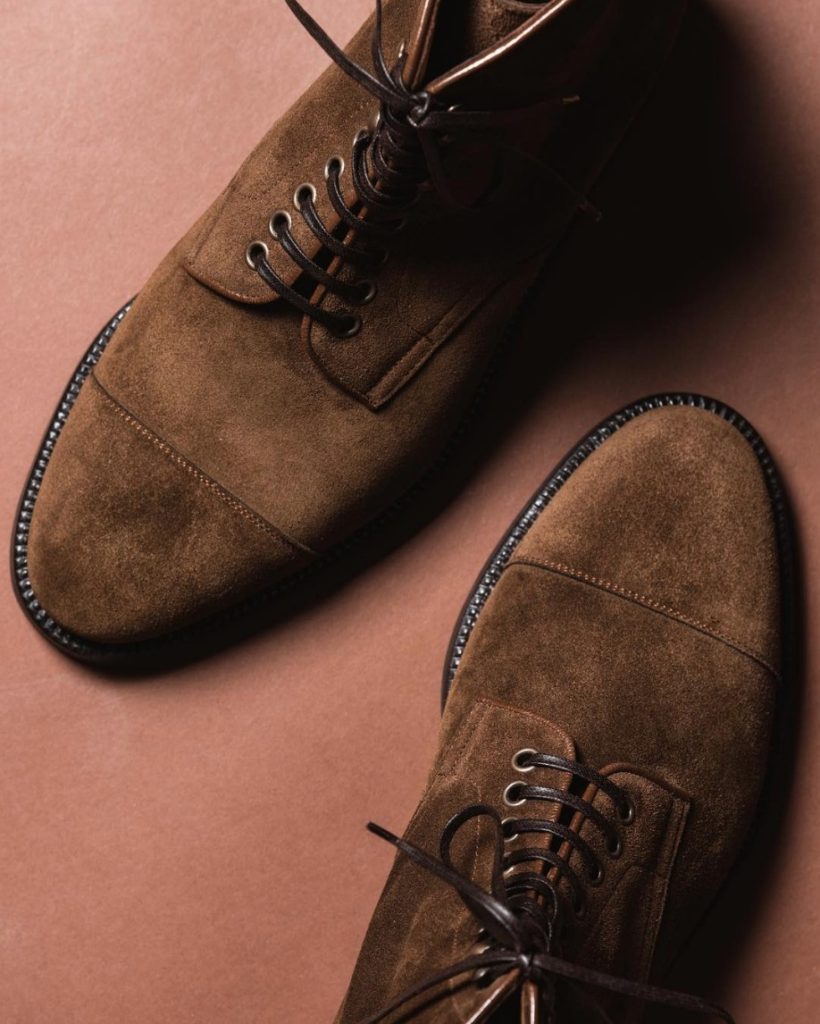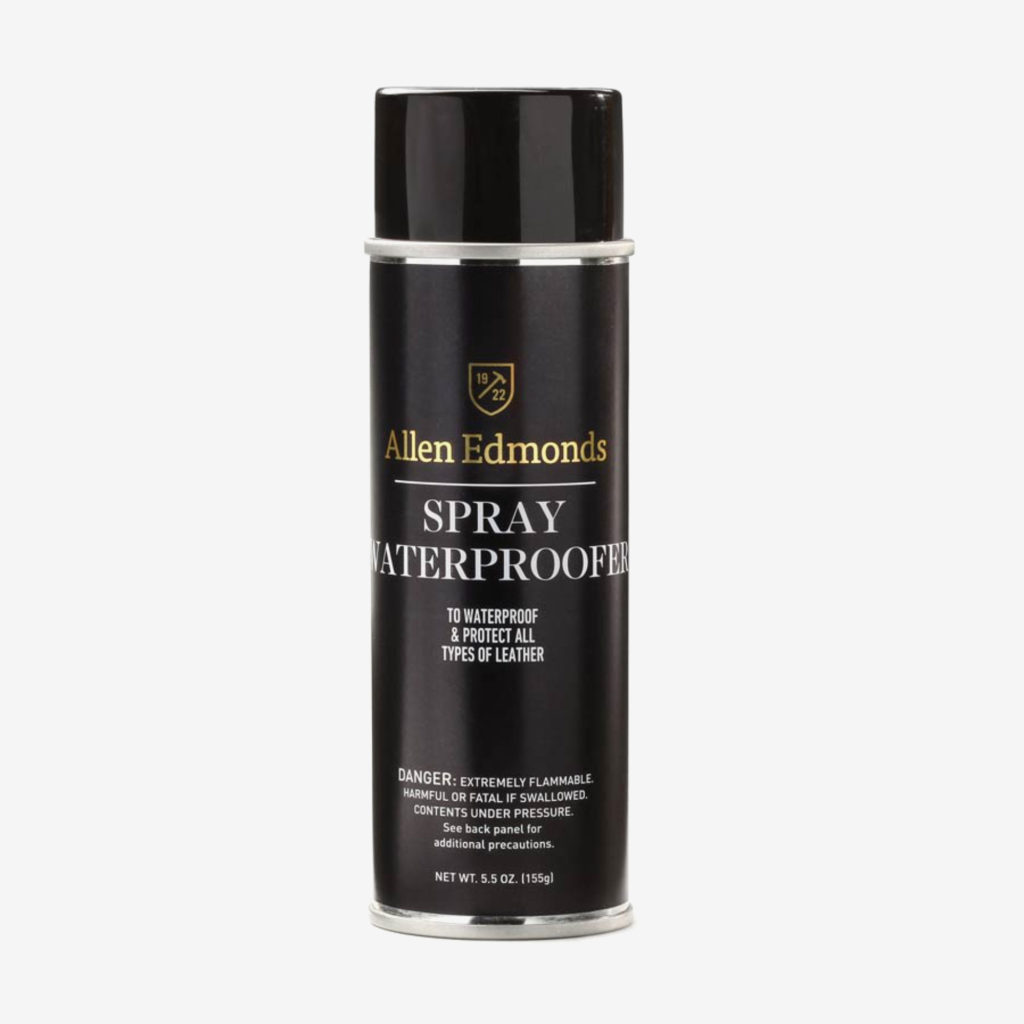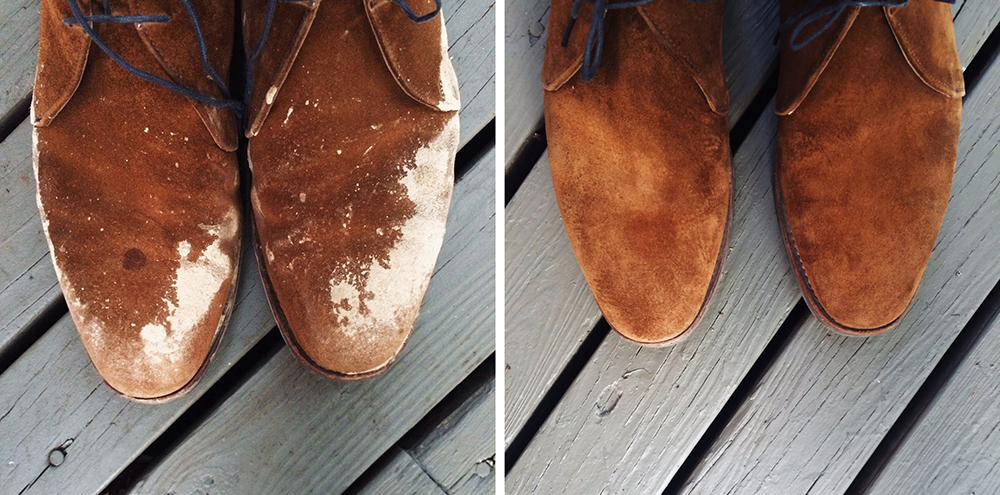
There’s this old story about George Hoby, a famous shoemaker in London who lived during the early 19th century. Supposedly, a customer walked into his shop one day, upset and ready to complain about a pair of boots that had split. Hoby took one look at them and then exclaimed: “Good God! You’ve been walking in them!”
Shoes are meant to be worn, of course, but there’s always that worry that you’re going to ruin a nice pair of footwear. The good news is that, when you buy something that’s well-made, it’ll look better — instead of worse — with age. That goes for everything from dress shoes to work boots, suede to shell cordovan. Like a pair of raw jeans, good leather looks better once it has some character beaten into it.
That said, there are good and bad forms of wear-and-tear. Suede in particular has a reputation for being delicate (Seinfeld’s suede leather jacket was famously ruined by the rain), but it’s actually a tougher material than you think. Here’s how to keep suede shoes looking their best this winter.

Prevention
The first step is prevention. When you get new suede shoes, spray the uppers with a silicone-free waterproofer, such as the ones sold by Allen Edmonds and Tarrago. These create a million tiny filaments that stick up off the surface of your shoes. These filaments, which work like a bed of nails, prevent the surface tension on any liquids from breaking, which means spills and splashes roll off your shoes before staining the leather. Seriously, this stuff works like magic.
You’ll want to reapply these treatments every once in a while. I do so about once a year, but to check if your coat is still active, just pour some clean water over the surface of your shoes. If the water beads up, such that you get that quicksilver effect, you’re good. If not, you’ll want to reapply the waterproofer.
Simple Cleaning
In some ways, suede is easier to care for than calfskin since you never have to treat it to any leather conditioners or polishes. It does benefit, however, from an occasional cleaning. To brush out any dirt or superficial stains, spot clean the surface with a suede eraser or suede-designated brush. These work like you’d imagine — just a bit of brushing back and forth will remove any dirt particles and light staining. Woodlore sells a combo pack for just under $8, while our advertiser The Hanger Project has fancier options from Europe.
Whatever you choose, only use brushes that are made specifically to treat suede. Some, such as the ones included in sneaker cleaning kits, are too stiff and will remove your suede’s nap.

Deeper Cleaning
For more serious stains, such as pizza drippings and spilled gazpacho, you’ll want to try a three stage approach. The first is to apply some kind of absorbent powder, such as baking soda, talcum powder, or Terre de Sommieres. Assuming the stain is still fresh, this will help suck out as much of the offender as possible.
Next, brush your shoes down with a suede brush to remove any superficial dirt, then prepare them for a deep cleaning shampoo treatment. This can be done by mixing equal parts clean water and Saphir’s Omni Nettoyanat Shampoo. Mix this up a bit, then brush it onto your shoes until you get a nice lather. Repeat as necessary and then wash out the shampoo using only water. You don’t have to stick your shoes under a sink for this — just use the same brush and keep washing with clean water until you don’t see any suds.
Finally, stuff your shoes with crumpled newspaper and let them dry for a day or two (always in a dry place, but never next to a heat source). You can then restore the nap by brushing the surface once more with a suede or crepe brush.
This approach doesn’t always work, but it does a remarkably good job most of the time. And it’s a smart idea to keep these ingredients handy, before you actually need them, so you can readily access them for a cleaning before stains settle in. For any remaining residue, chalk it up to a patina.
(photo via Skoaktiebolaget, Allen Edmonds, and Pete Anderson)